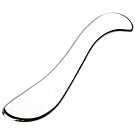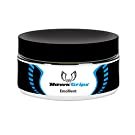What is Dry Needling?
The Effectiveness of Trigger Point Dry Needling for Musculoskeletal Conditions by Physical Therapists: A Systematic Review and Meta Analysis. Eric Gattie, Joshua A. Cleland, and Suzanne Snodgrass. Journal of Orthopaedic & Sports Physical Therapy201747:3,133-149
Dry needling. (2022, November 9). Physiopedia, . Retrieved 22:26, January 1, 2023 from https://www.physio-pedia.com/index.php?title=Dry_needling&oldid=320081.
Dry Needling is performed by a Licensed Physical therapist who is certified in Dry Needling. The therapist uses a thin myofilament needle (does not contain medication) that penetrates the skin to aim at underlying trigger points in the muscle belly for the management of pain and movement impairments.
What is a Trigger Point?
A trigger point is a local contracture or tight band “knot” in a muscle fiber that can disrupt function, restrict range of motion, refer pain or cause local tenderness. Trigger points are known to have abnormal electrical activity, low pH level and are surrounded by chemicals known to cause inflammation. When dry needling is applied to a dysfunctional muscle or trigger point, it can decrease banding or tightness, increase blood flow, and reduce local and referred pain by creating a local twitch response. The local twitch response can change the chemical environment of the trigger point by drawing in white blood cells and plasma cells to the area as a healing response. (1)
The Glutes have several deep layers that are impossible to get with your hands or tools. The needle is precise and can go to the depth of the bone for full treatment of the muscle not just the surface.
Is Dry Needling and Acupuncture the same thing?
Although they use the same tool of a thin filament needle they are two different treatments. Acupuncture is used to treat Traditional Chinese Medical diagnosis of visceral and systemic dysfunction and use meridians as treatment guides. Dry Needling is based on principles of Western medicine. The needle is aimed only at the trigger point within the muscle being inserted. Trigger point dry needling are based on scientific neurophysiological and biomedical principles.
Click the link below to find a clinician
Click Here
Benefits of Dry Needling
Improve pain
Improve Range of motion
Improve any type of muscle pain
Neurophysiological effects
Improve blood flow
Dry Needling can be used to treat a variety of musculoskeletal issues including neck pain, head aches, jaw pain (TMD), tennis elbow, back and low back pain.
Contraindications
DN therapy should be avoided in patients under the following circumstances(2).
In a patient with needle fobia.
Patient unwillng - fear, patient belief.
Unable to give consent - communication, cognitive, age-related factors.
Medical emergency or acute medical condition.
Over an area or limb with lymphedema as this may increase the risk of infection/cellulitis and the difficulty of fighting the infection if one should occur.
Inappropriate for any other reason.
Are there any side affects to the treatment?
Temporary Soreness/discomfort
Bruising
How is Dry Needling (DN) different as compared to as massage or instrument assisted soft tissue mobilization?
I find Dry Needling most useful in those areas that traditional manual therapy (soft tissue work like massage or IASTM) can’t reach. For example the Lateral Pterygoid muscle. This muscle is beneficial in treating TMJ and head aches and can only be reached with a needle. It also is very specific to be used for small muscles in the hands or feet.
Lateral Pterygoid is accessed under the zygomatic arch
The needle frequently treats the full depth of the muscle that goes deep to the bone.
No other manual therapy can treat the full depth of the muscle.
Dry needling is also very specific to treat smaller muscles like in the hands and spine.
I always think of this scene in Ace Ventura
“Its in the Bone!!!”
Click the link below to find a clinician
Dry Needling Clinicians
If Dry Needling is not for you there are so many more self treatment tools. I have linked below other great tools for self treatment for muscle pain.
Disclaimer Amy the PT girl is to be used for educational purposes only. It is not intended to diagnose or treat medical conditions. It is recommended you consult your healthcare provider before beginning any exercise program. If your condition does not improve or worsens, stop exercises and consult your physician right away.
If your looking for one-on-one guidance please feel free to contact me through email or submitting your information in the contact section. You can also find video’s of this exercise on my You Tube Channel.








